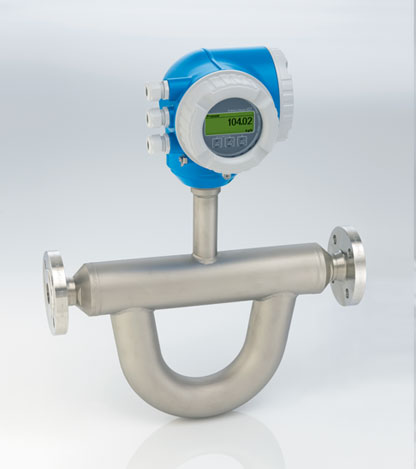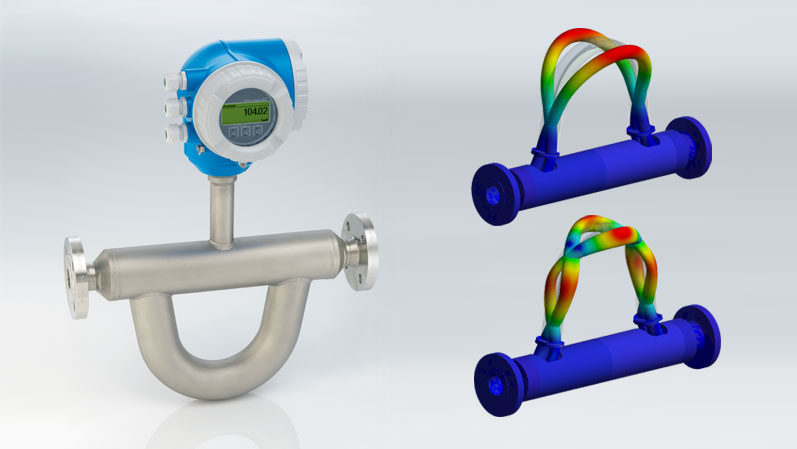Sustainably anchor simulation culture in the development processes
Make decisions early, quickly and confidently
For decades, simulation has been recognized as a reliable tool in product development. However, simulation is not an end in itself. The full potential of simulation is unlocked for a company when many more professionals involved in the development process are empowered to use live simulation to make necessary design decisions faster, earlier and more confidently.


Interview with Dr. Ulrich Kaiser, former Director of Technology at Endress+Hauser
Success does not depend solely on the availability of appropriate simulation software. What is also absolutely necessary, as formulated by Dr. Ulrich Kaiser, is “an anchoring of simulation culture along the entire development cycle.” Kaiser, who worked for more than 15 years as director of technology at the Endress+Hauser AG holding company, spoke with CADFEM Journal about how this can best be achieved.
What makes a company successful?
Every company functions as a value-added machine. More specifically, the higher the quality and competitiveness of the products that are manufactured, the higher the value added. Decisive factors include goods purchasing and efficient internal processes. In this context, management is responsible for ensuring both future and current competitiveness.
Management, therefore, must first be convinced of whether new tools and the associated changes in processes are to be established in a company. If management recognizes that this will benefit the company and increase added value, a positive decision is foreseeable.
Dr. Ulrich Kaiser, former Director of Technology at Endress+HauserSimulation is the only way to ensure that, on the one hand, fewer costly real prototypes are needed, and, on the other hand, many more ideas can be explored in the form of virtual prototypes.
Which benefit is the focus of the simulation applications?
Simulation is the only way to ensure that, on the one hand, fewer costly real prototypes are needed, and, on the other hand, many more ideas can be explored in the form of virtual prototypes. As a result, fewer iterations are needed in the design process, because critical points are identified and reacted to earlier.
Product criteria that are pivotal for added value, such as reliability, sustainability and attractiveness, can be decisively improved through the targeted use of simulations. The entire design process can be accelerated, resulting in faster product maturity and availability. All these benefits strengthen the sustainability of the company’s competitiveness.
We see these fundamental advantages not only in very special and complex tasks, but also in the daily design process for the so-called “routine activities”. In the case of covers, housings or holders, the designer decides where reinforcements make sense even before a tool is ordered for the prototype.
From an article by Dr.-Ing. Alfred Rieder in the CADFEM Journal 2018/2
One of the most outstanding products from Endress+Hauser’s wide range is the Promass Q Coriolis mass flowmeter. This process measuring device is inserted into a process line where it continuously determines process variables of the fluid flowing through it. In addition to mass flow (±0.05%), this meter also determines density (±0.2 kg/m³) and temperature (±0.1°C) with exceptionally high accuracy.
Fifteen patents have been implemented in the Promass Q, and approximately 1,000,000 virtual prototypes were calculated during the six-year development and industrialization phase. The innovative “multi-frequency technology” was honored a few years ago with the “Swiss Technology Award” as well as the “German Innovation Award”, among others. Complex vibratory systems such as Promass Q would not be feasible without numerical simulation. In the development of modern process sensors, a combined approach using experimental design – flanked by simulation methods – has become indispensable.
To keep from losing touch with reality, it is helpful to bridge the gap between the realized prototypes on the one hand and the FEM simulation on the other, as often as possible. The associated comparison of the material parameters is the basis for an accurate prediction of the real system behavior through the simulation. As a result of this procedure, a better understanding of the functional principle of the measuring device is obtained from the FEM simulation. Using Ansys Workbench, experimentally observed phenomena can be reproduced on the computer, which often contributes significantly to the development of possible solutions. Through simulation, many costly and time-consuming experiments can be avoided in this phase.

Dr.-Ing. Alfred Rieder, Endress+Hauser Flowtec AGFifteen patents have been implemented in the Promass Q, and approximately 1,000,000 virtual prototypes were calculated during the six-year development and industrialization phase.
What role does simulation play in product development today?
The benefits of simulation are well recognized. Every company developing products today has some form of access to computational experts. Simulation, however, typically takes place as a validation step at the end of a development cycle. It is a subject associated with a certain myth and expert knowledge. As a result, the actual potential that is offered here has not yet been exhausted.
What additional potential benefits can companies take advantage of with the introduction of live simulation?
Until now, a design engineer is only able to place a simulation order with one of a few experts, for example if he or she wants to compare several variants. The more there is to be simulated, the more difficult it becomes to pursue this concept further. This cannot be implemented for broad application throughout the entire development process because it is not easily scalable.
The availability of all data in digital form now paves the way for further increasing the efficiency of the development process. Equipping every developer workstation with simulation is an important building block on this path and is therefore the next logical step.
What role does live simulation play for Endress and Hauser?
Live simulation eliminates the complexity of simulation from most everyday use cases. We see in the application of live simulation at Endress+Hauser that it works quite well. Practitioners from design departments as well as their supervisors have confirmed this. One of the reasons why it works so well is that the software “speaks the language of designers.”
Live simulation is simple and understandable. Because it is so accessible and is even available already integrated into our CAD system, every design engineer can quickly analyze and visualize critical points in parallel with the design. This leads to more certainty for colleagues in their day-to-day work, while also opening up the possibility of trying out alternative approaches simply and quickly. This means that new ideas can either be developed further or, if they are unsuitable, quickly discarded.

How can simulation be integrated as deeply as possible into the product development process?
So far, design processes have largely been based on standards, guidelines and experience. However, simulation should now also become a clearly defined part of the design process. In this way, the simulation culture can be anchored in all steps of a development cycle.
For example, a joint project to optimize the design process using simulation could be started. For a successful implementation of simulation, the views and working methods of those involved must also change. In addition to user training, a well-functioning community of knowledge for simulation use is an important pillar for change management.
In this context, communication with and between all those involved should be highly stressed. How and why simulation is used cannot be emphasized enough. At the same time, the benefits of simulation should be repeatedly highlighted, publicized, and, of course, constantly reviewed.
In the past, simulation was often only a marginal topic for management. What importance should management give to simulation today and in the future?
The projects to expand simulation at Endress+Hauser would not have been feasible if we had not had the committed support - not just the approval - of the highest level of management. It was not a question of particularly high investments, as those involved could even have decided for themselves. Rather, it was much more about the strategic orientation of the development processes.
It didn’t take long to convince the development managers and get their approval. It was clear to them that simulation accelerates and improves processes, and that it is a great advantage for everyone to be able to simulate. Under these favorable constellations, we realized that what was unthinkable yesterday is already taken for granted today and will be indispensable tomorrow. With this approach, we will still be able to sell our products successfully tomorrow because it is clear to all of us that the competition never sleeps.
Thank you very much for the interview, Dr. Kaiser. We wish Endress+Hauser continued success with simulation.

Endress+Hauser Management AG
www.endress.com
Images: © Endress+Hauser
Published: May, 2022
Contact CADFEM





